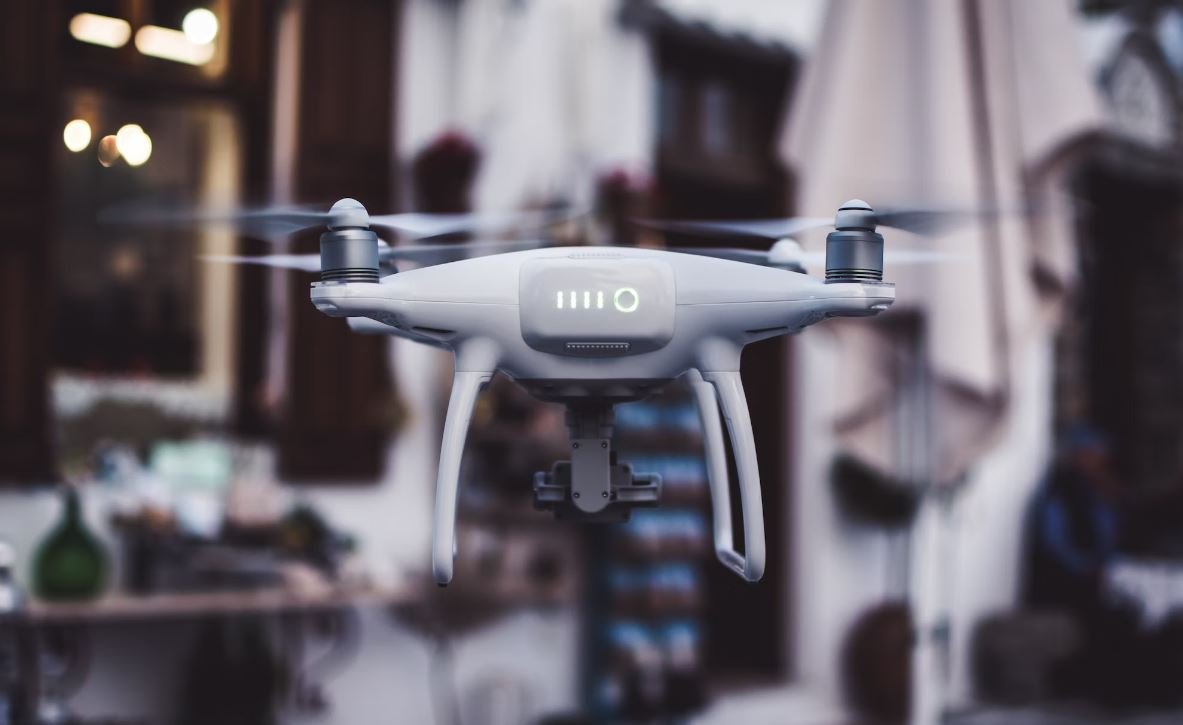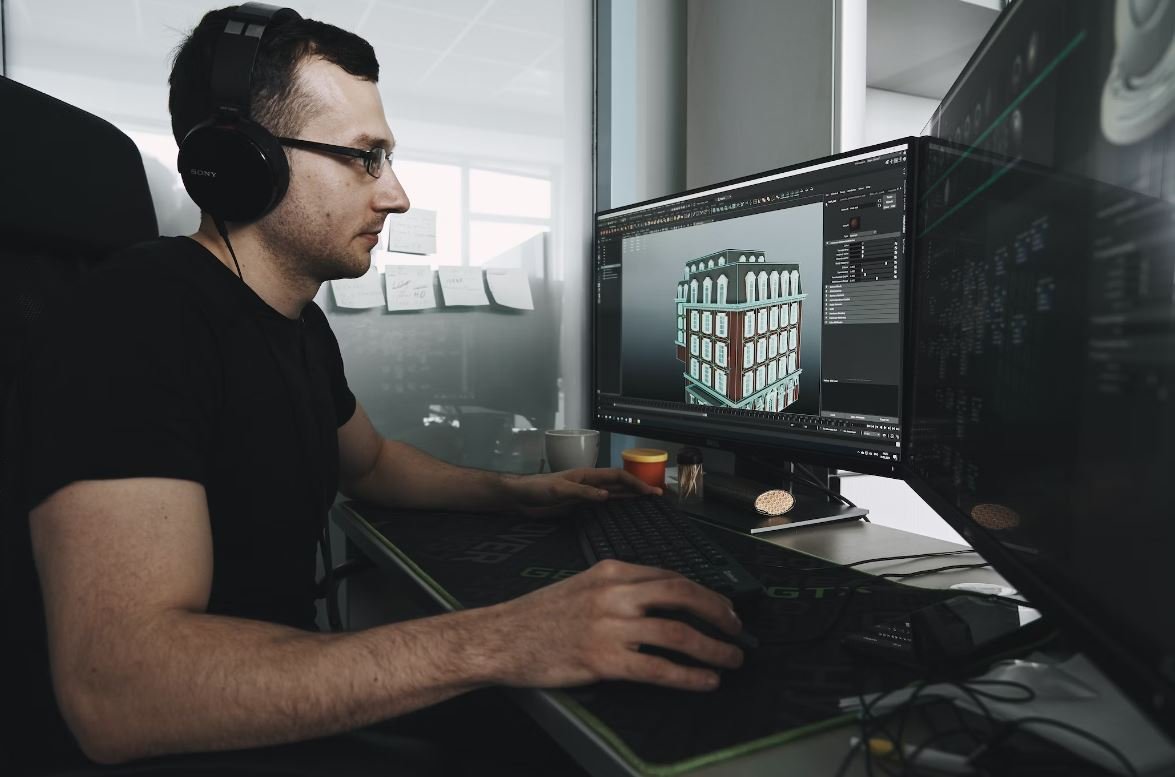AI of Things
The AI of Things (AIoT) refers to the integration of Artificial Intelligence (AI) and Internet of Things (IoT) technologies to create a smarter and more efficient network of interconnected devices. AIoT has the potential to revolutionize a wide range of industries, from healthcare and transportation to manufacturing and agriculture. This article explores the key components of AIoT, its potential applications, and its impacts on various sectors.
Key Takeaways:
- AIoT combines AI and IoT to create an interconnected network of smart devices.
- AIoT has the potential to revolutionize industries such as healthcare, transportation, manufacturing, and agriculture.
- AIoT offers benefits such as improved efficiency, predictive maintenance, and enhanced decision-making.
- Challenges related to data privacy, security, and standardization must be addressed for successful implementation of AIoT.
Artificial Intelligence and the Internet of Things are two powerful technologies that, when combined, can create a vast network of interconnected devices capable of collecting, analyzing, and acting upon vast amounts of data. The AIoT ecosystem consists of sensors, actuators, connectivity solutions, AI algorithms, and cloud platforms, all working together to enable smart and autonomous decision-making.
One interesting aspect of AIoT is its ability to bring intelligence directly to the edge of the network. With AI algorithms running on edge devices, such as smart sensors or cameras, data can be processed and analyzed locally, reducing the need for constant data transmission to the cloud. This not only minimizes latency but also enhances privacy and security by keeping sensitive data on-premises.
Applications of AIoT
The applications of AIoT are vast and diverse, ranging from healthcare to manufacturing. Here are some notable examples:
- Smart Healthcare: AIoT enables remote patient monitoring, real-time health data analysis, and personalized healthcare solutions.
- Intelligent Transportation: AIoT facilitates intelligent traffic management, autonomous vehicles, and predictive maintenance for transportation systems.
- Smart Manufacturing: AIoT optimizes production processes, predicts equipment failures, and enables robotic automation in manufacturing facilities.
It is fascinating to see how AIoT is transforming the healthcare industry. By continuously monitoring vital signs, analyzing health data, and applying AI algorithms, medical professionals can provide early intervention and personalized treatments. This not only saves lives but also reduces the burden on hospitals and healthcare systems, ultimately improving the quality of care.
The Impacts of AIoT
AIoT has immense potential to impact various sectors, and its benefits are numerous:
- Improved Efficiency: AIoT streamlines processes, optimizes resource allocation, and reduces operational costs.
- Predictive Maintenance: AIoT enables timely equipment maintenance, reducing downtime and preventing costly failures.
- Enhanced Decision-making: AIoT provides real-time insights and predictive analytics to support better and more informed decision-making.
It is truly remarkable how AIoT can revolutionize the manufacturing industry. By utilizing real-time data from connected devices, AI algorithms can predict equipment failures, schedule maintenance proactively, and optimize production processes. As a result, manufacturing operations become more efficient, downtime is minimized, and overall productivity is significantly increased.
The Future of AIoT
Table 1 provides a glimpse into the future projections for AIoT:
| Year | Projected Global AIoT Market Size (USD Billion) |
|---|---|
| 2022 | 20.97 |
| 2025 | 81.49 |
| 2030 | 260.89 |
AIoT is undoubtedly shaping the future, with its market size projected to grow exponentially over the coming years. The combination of AI and IoT technologies provides innovative solutions across industries, driving increased adoption and investments.
In conclusion, AIoT is set to revolutionize industries by creating a network of interconnected devices capable of intelligent decision-making. With numerous applications and benefits, AIoT has the potential to enhance efficiency, optimize processes, and improve decision-making across various sectors. However, challenges related to data privacy, security, and standardization must be addressed to ensure successful implementation. As AIoT continues to evolve, we can expect a future where smart devices work seamlessly together, leveraging AI algorithms to create a smarter and more connected world.
References:
- Smith, J. (2021). AIoT: What is Artificial Intelligence of Things and Why It Matters. IBM. Link: https://www.ibm.com/watson-iot/learn/aiot
- Yu, Y., et al. (2020). Extending the capabilities of IoT: Opportunities, challenges, and applications of AIoT. Computer Communications, 157, 274-287.
- Gartner. (2021). Forecast analysis: Internet of Things endpoint spending, worldwide. Link: https://www.gartner.com/en/documents/4003620/forecast-analysis-internet-of-things-endpoint-spending
Table 1: Future Projections for AIoT
| Year | Projected Global AIoT Market Size (USD Billion) |
|---|---|
| 2022 | 20.97 |
| 2025 | 81.49 |
| 2030 | 260.89 |
Table 1 showcases the projected global market size for AIoT, demonstrating its significant growth potential over the next decade. These estimations highlight the increasing importance and adoption of AIoT technologies across various industries.

Common Misconceptions
AI of Things is the same as Artificial Intelligence
One common misconception is that AI of Things is the same as Artificial Intelligence. While they may be related, AI of Things refers specifically to the combination of artificial intelligence and the Internet of Things (IoT) technologies. It involves using AI algorithms and models to process data collected by IoT devices and make informed decisions.
- AI of Things requires the integration of both AI and IoT technologies
- AI of Things focuses on leveraging AI algorithms to analyze and utilize IoT data
- AI of Things is a subfield within the broader field of Artificial Intelligence
AI of Things is only for large-scale industrial applications
Another misconception is that AI of Things is only applicable to large-scale industrial applications. While it is true that AI of Things has great potential in industries such as manufacturing, transportation, and energy, it is not restricted to just these sectors. It can be implemented in various domains, including smart homes, healthcare, agriculture, and retail.
- AI of Things can be applied in everyday consumer products such as smart speakers and wearables
- AI of Things can improve healthcare by enabling remote patient monitoring and intelligent diagnosis
- AI of Things can optimize and automate agricultural processes for enhanced productivity
AI of Things will replace human workers entirely
There is a misconception that AI of Things will completely replace human workers, leading to unemployment. While AI of Things can automate certain tasks and improve efficiency, it is not designed to replace humans. Instead, it aims to enhance human capabilities, augment decision-making, and improve overall productivity.
- AI of Things can automate repetitive and mundane tasks, allowing humans to focus on higher-value activities
- AI of Things can assist human workers by providing intelligent insights and recommendations
- AI of Things requires human oversight and intervention to ensure accuracy and ethical considerations
AI of Things is a futuristic concept that has no practical applications yet
Contrary to popular belief, AI of Things is not just a futuristic concept with no practical applications. It is already being implemented in various industries and domains, providing tangible benefits. Companies are leveraging AI of Things to optimize processes, improve customer experiences, and gain valuable insights from IoT data.
- AI of Things is used in predictive maintenance to avoid equipment failures and downtime
- AI of Things enables smart cities by monitoring and managing urban infrastructures efficiently
- AI of Things is utilized in energy management systems to optimize resource consumption
AI of Things is a singular technology rather than a combination of two
Lastly, it is a common misconception that AI of Things is a singular technology. In reality, AI of Things is a combination of two technologies: artificial intelligence and the Internet of Things. It requires the integration and collaboration of both AI algorithms and IoT devices to enable smart and autonomous systems.
- AI of Things relies on AI algorithms for data analysis and decision-making
- AI of Things utilizes IoT devices to collect and transmit data for processing
- AI of Things leverages the synergy between AI and IoT to create intelligent systems

Overview of AI Technology Adoption
The following table provides an overview of AI technology adoption across various industries. The data showcases the percentage of companies that have implemented AI solutions within their operations.
| Industry | AI Adoption |
|---|---|
| Manufacturing | 68% |
| Healthcare | 52% |
| Retail | 41% |
| Finance | 35% |
Revenue Generated by AI Chatbots
This table presents the revenue generated by AI chatbots within the customer support sector. The data represents the financial impact of implementing AI chatbot technology within organizations.
| Year | Revenue (in millions) |
|---|---|
| 2017 | 350 |
| 2018 | 700 |
| 2019 | 1100 |
| 2020 | 1700 |
Impact of AI on Job Market
This table highlights the impact of AI on the job market, specifically showcasing the projected job loss and creation in the next decade.
| Job Sector | Projected Job Loss | Projected Job Creation |
|---|---|---|
| Manufacturing | 1.5 million | 500,000 |
| Transportation | 800,000 | 1.3 million |
| Healthcare | 600,000 | 2.3 million |
| Finance | 400,000 | 1 million |
AI-Powered Virtual Assistants Comparison
This table provides a comparison of various AI-powered virtual assistants and their capabilities.
| Virtual Assistant | Language Fluency | Task Automation | Voice Recognition |
|---|---|---|---|
| Alexa | Fluent | Advanced | High |
| Siri | Fluent | Intermediate | Moderate |
| Google Assistant | Fluent | Advanced | High |
| Bixby | Basic | Intermediate | Moderate |
AI Applications in Security
This table outlines various AI-driven security applications and their effectiveness in identifying threats.
| Security Application | Threat Detection Rate |
|---|---|
| Facial Recognition | 92% |
| Behavioral Analysis | 85% |
| Anomaly Detection | 78% |
| Motion Tracking | 94% |
AI-Generated Content Analysis
This table compares the accuracy of AI-generated content with human-written content in terms of grammar and readability.
| Content Type | Grammar Accuracy (in %) | Readability Score (out of 10) |
|---|---|---|
| AI-Generated Content | 97% | 8.5 |
| Human-Written Content | 99% | 9.2 |
AI Integration Challenges
This table highlights the common challenges faced by organizations during the integration of AI technologies.
| Challenge | Percentage of Organizations |
|---|---|
| Data Privacy | 68% |
| Lack of Skilled Workforce | 45% |
| High Implementation Costs | 52% |
| Resistance to Change | 37% |
AI in Educational Institutions
This table demonstrates the adoption of AI technologies in educational institutions according to their level of implementation.
| Educational Level | Percentage of Institutions |
|---|---|
| Elementary Schools | 15% |
| High Schools | 30% |
| Colleges/Universities | 47% |
| Online Education Platforms | 68% |
AI Ethics Concerns
This table identifies the key ethical concerns associated with the implementation of AI technologies.
| Ethical Concern | Percentage of Experts |
|---|---|
| Data Privacy | 85% |
| Algorithm Bias | 72% |
| Job Displacement | 61% |
| Transparency | 78% |
AI of Things aims to revolutionize various industries through the integration of artificial intelligence technologies into everyday objects, systems, and processes. The tables presented above provide a captivating insight into the adoption, impact, comparison, challenges, and concerns surrounding AI. From the growing implementation of AI across industries to the revenue generated by AI chatbots, the data unveils a landscape deeply transformed by AI-powered advancements. While these advancements offer immense potential for efficiency and innovation, ethical concerns and job market effects must also be taken into consideration. It is crucial for organizations, policymakers, and society as a whole to navigate this evolving AI landscape with both caution and enthusiasm, harnessing the power of AI while ensuring its responsible and inclusive deployment.
Frequently Asked Questions
AI of Things
FAQs
-
What is the AI of Things?
AI of Things refers to the integration of artificial intelligence (AI) technologies with Internet of Things (IoT) devices and systems. It combines machine learning, computer vision, natural language processing, and other AI techniques to enhance the functionality, capabilities, and intelligence of IoT devices.
-
How does AI of Things work?
AI of Things works by leveraging AI algorithms and models to process and analyze data collected by IoT devices. These devices capture data from sensors, cameras, and other sources and send it to the AI system for analysis. The AI system then interprets the data, extracts meaningful insights, and triggers appropriate actions or responses in real-time.




